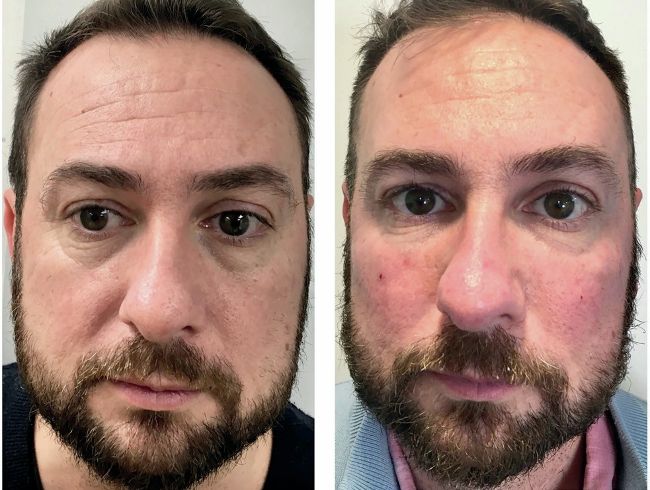VIVACY
Every angle
Three-dimensional correction with Stylage volumisers
Dr Chike Emeagi, Medical Director of Hampstead Aesthetics Clinic, uses a specific technique to combine natural results with volumisation in the mid-to-upper face area.
“Patients attending the clinic seek alternatives to surgical procedures. Many are looking for restoration of lost facial volume due to ageing – combined effects of gravity, progressive bone resorption, loss of tissue elasticity and subcutaneous tissue redistribution. Some are seeking an enhancement of their facial features whilst others requesting correction of facial asymmetry. All patients are welcome as a bespoke treatment plan is offered. The most important is to consider the mid-face from a three-dimensional perspective rather than a two-dimensional construct. The outcome should be a natural, rejuvenated and unoperated look.
“STYLAGE® offers a full range of monophasic injectable dermal fillers composed of gels of HA, whose bespoke design is the result of the patented IPN-Like Technology, and antioxidants. The science behind the IPN-Like technology and unique combination between the elasticity and the viscosity of the gel respect the specificity of each indication and injection plane to enhance the natural beauty of the patient’s features.
“The addition of an antioxidant, the mannitol, minimises the degradation of the HA at the moment of injection. This means I observe less swelling, redness and erythema post treatment. From a physician’s point of view, STYLAGE® offers the ability to lift tissues, mechanical support and ease of spreading for a more precise, optimal result. I find that STYLAGE® XXL and STYLAGE® XL give particularly great results to achieve facial rejuvenation of the facial contours, such as cheeks, cheekbones and temple hollowing. Their high viscoelasticity and cohesivity properties make them excellent volumising products. “However, they remain very malleable and easily injected into the deep dermis and subcutaneous tissues with a cannula: the resultant aesthetic effect is that of a natural correction. STYLAGE® XL is also available with the local anaesthetic lidocaine for more patient comfort during the procedure.
“I follow a standardised strategy as anatomically bone and fat ageing happens in a predictable pattern. The area of injection is based on anatomical regions and the initial approach is a deep injection to the periosteal layer then superficial injections in the superficial subcutaneous fat layer. The compartments to be injected are marked. The deep malar plane is injected with STYLAGE® XXL to enable significant anterior projection. A 25G 40mm cannula is used to inject into the lateral and medial sub orbicularis oculi fat and the deep medial cheek fat. Injection volumes vary from 0.1-0.3ml of HA in each compartment. The philosophy behind this approach is to create vertical strut supports over the bone to lift the malar zone. The lateral compartment of the superficial cheek fat is then treated with a more superficial depth of injection by cannula.
“In this case described, I also concentrated on the preauricular region where a lot of volume loss takes place. I prefer STYLAGE® XL in this plane. The middle compartment is then also addressed with a fan-like approach. The medial compartment of the superficial cheek fat pad was also injected in this case. The case was finished by injecting into the deep orbital plane with STYLAGE® S, directly onto the periosteum. A 40mm 25G cannula is used. This reduces bruising and helps to negotiate the ligaments of the orbital retaining ligaments. The palpebromalar groove and tear trough are both addressed. Typically, I use 0.2ml in the tear trough and 0.3ml in the palpebromalar groove. A micro-droplet technique is employed. “Minimal massage is needed after treatment. This case required three sessions which is typical for patients with significant volume loss, spaced at four to five weeks apart.”

Before and after three sessions. Courtesy of Dr. Chike Emeagi.
For more information visit vivacylab.com/en